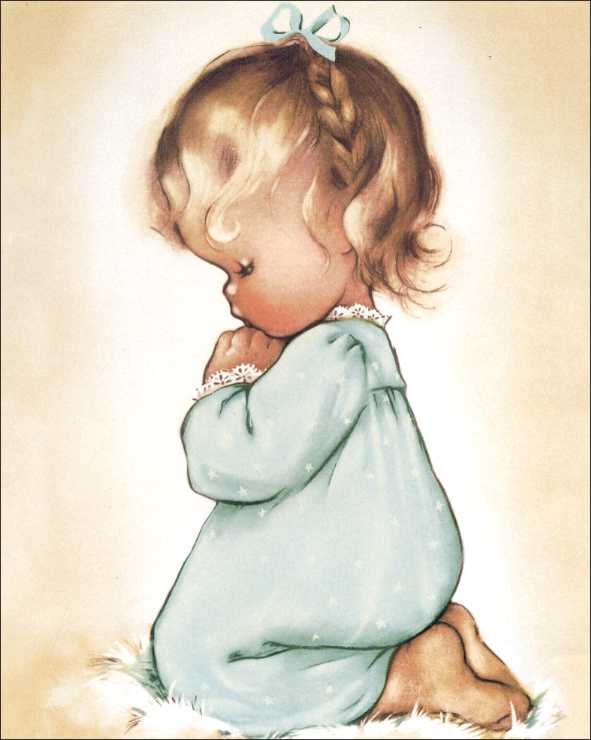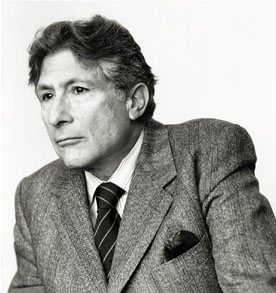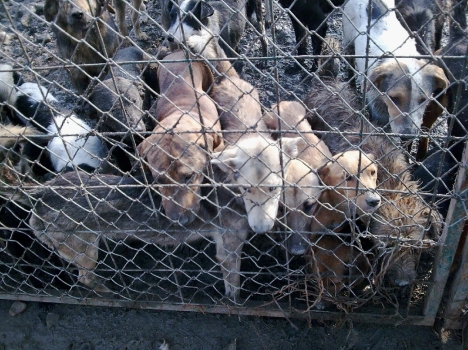Enraged by the narrow understanding of terrorism presented in class, I shed my introverted skin and advanced an argument that took the logic of xenophobic security policies to its limit. If the improbable yet potentially destructive threat of terrorism justifies the invasion of civil liberties, then surely the politicians that could potentially initiate preemptive warfare in Middle East nations while simultaneously stirring up terrorist backlash deserve a stricter scrutiny than Muslims in an airport. After almost two semesters’ worth of developing my sympathetic imagination, I was enraged that the Otherization of terrorists forecloses an opportunity to encounter their political struggles as a political response to American empire. I was enraged by the dominant political narratives that obscured our understanding of American hegemony. I was not enraged at my classmates themselves – I have developed a profound feeling of respect towards their opinions and beliefs. Rather, I was enraged at the discursive mechanisms that misinform the public about political issues on a macro level.
I believe that structural forces skew the media outlets’ portrayal of political issues in order to advance specific ideological goals into the masses. American ideologies of deregulation and neoliberalism have both been reliant on positive media representations of their political means. Countless examples of dangerous discourses including the black welfare queen, primitive African societies in need of IMF intervention, or even the moralistic portrayal of the abortion debate have all skewed our understandings of major political issues. The only way to counter these dominant narratives is to advance forms of counter-knowledge to stake a greater claim on advancing history. Corporate control of knowledge outlets has rendered docile any potential progressive forces in the United States political arena. These “sound-bite saboteurs” effectively “mobilize superior resources, access to powerful public and private institutions and organizations, and a loosely linked network of information professionals (…) to gradually and incessantly saturate multiple political and cultural discourses—from talk radio to news to popular publishing—with the rhetoric, anecdotes, and familiar framing devices needed to reinforce their particular vision of limited government, a government limited to national defense and punishing criminals” (Lyons 23). These dangerous saboteurs are able to manipulate political discourses in a way that shapes our understandings of political reality. Institutions that exploit these narratives are built from the bottom-up. The nature of this hierarchy necessitates a discursive resistance that focuses on the discourses themselves on both a micro- and macro-level.
We have learned about countless examples of how dominant systems of knowledge and discourse can produce negative effects on society. One of the most provocative readings in the course anthology chronicled the anthropocentric roots of most patriarchal discourse. It concludes that “language necessarily reflects a human-centered viewpoint more completely than a male-centered one” (Anthology II 589). This exposes the necessity of devoting my attention and activism towards changing the way that individuals approach certain discourses. In order to expose the daily instances of patriarchal or anthropocentric domination, pointing out the irresponsibility of such rhetoric definitely constitutes a political moment.
To ignore the systemic problems of misinformation and manipulation of the public sphere would be unwise. Although I could write hundreds of books criticizing certain aspects of dominant discourses, changing mindsets is a process that involves direct interactions with people. Theories have too strong of a potential to seem irrelevant in the context of a human being’s specific experiences. Even when discussing the theories and teachings of Buddha, Siddhartha remarks that he prefers “the thing itself to the words, and place more importance on his actions and life than on his speeches, more stock in the gestures of his hand than in his opinions” (Hesse 137). Ultimately the only criterion that I can utilize to measure whether or not I have successfully addressed my goal of altering public response to misinformation is the actions I take instead of the claims that I make.
It is rather intuitive that the ability to control systems of knowledge in society could have very dangerous implications. Even in Through the Looking Glass, Alice wonders if you “can make words mean so many different things,” to which Humpty Dumpty remarks that it is a question of “which is to be master” (Carroll 269). In this way, what could easily be understood as merely linguistic power has material implications for our existence.
While I still retain that a primary function of the university is critique, my university experience also holds the potential to share optimistic stories of success that have an inspiring function. Even the fictional Elizabeth Costello that we read about last semester used her role as a lecturer to cause individuals to ask themselves provocative questions about anthropocentrism. These questions can make one uncomfortable, Costello’s son “wishes his mother had not come” and wonders that “if she wants to open her heart to animals, why can’t she stay home and open it to her cats?” (Coetzee 83).
Michel Foucault’s theorizing of “power” and “knowledge” elucidates on the best strategy to resist these dominant discourses. Foucault was primarily concerned with how power can be sequestered within the disciplines. Because those who wield the power over these systems of knowledge can influence how the subject is constituted within discourses, “the main point is not to accept this knowledge at face value but to analyze these so-called sciences as very specific “truth games” related to specific techniques that human beings use to understand themselves” Rabinow and Rose 146). Foucault concludes that a “relationship of confrontation reaches its terms, its final moment (and the victory of one of the two adversaries) when stable mechanisms replace the free play of antagonistic reactions” (Rabinow and Rose 142). Fortunately many of these power relations are still in flux, and aligning myself with movements that attempt to reverse these relations can translate into visible results.
This has helped me reach a conclusion regarding the question of methodology. A major feature of the past year in world literature has been being inundated by a laundry list of structural problems in society: racism, sexism, anthropocentrism, sexual abuse, and even genocide. Although both Earthlings and Ishmael alluded to a solution involving consciousness-changing, I have repeatedly expressed my frustration about the lack of political mobilization associated with ideas. Ishmael’s prophetic claim that the survival of humanity depends not on “the redistribution of power and wealth within the prison but rather the destruction of the prison itself” reveals an embedded racialism within advocates of consciousness-change separate from Marxist understandings of developing class consciousness (Quinn 252-3). I will concede that my usual response in blog posts has been to advocate a revolutionary Leftist stance to solve these problems. Rather than conform to the State’s conception of politics, I have usually demanded that politics should change the rules of the game that constitute the State. However, Foucault has helped remedy this conundrum by problematizing the dichotomy of being either ‘for’ or ‘against’ the government. Because “working with a government doesn’t imply either a subjection or a blanket acceptance,” one can remain hopeful that the “work of deep transformation can be done in the open and always turbulent atmosphere of continuous criticism” (Rabinow and Rose 171-2). Rather than being held back by abstract questions of methodology, I now understand that every moment of resistance that arises at the local, national, or global level is a worthwhile project. In this way, every experience that constitutes my existence is connected to a broader struggle as I am dominated by and subsequently resist power relations daily. As a result, I have resolved to develop the following action plan:
I must first be able to achieve the manageable goal of graduating college with an education that prepares me for the types of political activism that I eventually decide that I want to align with. Embedded within this goal are a few smaller goals, including determining which classes will give me the most capabilities and also how I can apply these tools in a college setting. Although I have yet to research the specific classes that I will need to incorporate to achieve this challenge, I feel like I should take some more courses in the English department that are writing-intensive. Although I feel like I am a capable writer, at times Bump’s emphasis on conciseness has caused me to realize how unnecessarily wordy my writing is at times. I feel like spending more time honing my writing skills will improve my ability to be persuasive. Moreover, I also believe it is essential for me to continue with getting my other degree in economics. With an economics background, I would have a diverse understanding of the workings of the economy from both a right-wing and left-wing perspective.
Learning and teaching in general holds many manageable victories. I ultimately intend on attending graduate school, which could give me more opportunities to have a teaching function at a school. If I were to achieve my goal of having this type of a role in an institution, I could impart my own pedagogical beliefs onto other students in order to foster a greater sense of social consciousness.
Bump’s course has been essential in enabling me to draw these conclusions about my passions and how I can use them to benefit society. Perhaps the most useful tool has been the idea of a sympathetic imagination, which has caused me to initially challenge many dominant narratives about political issues in the first place. Moreover, the focus on raising social awareness as a solution to both local and global problems has influenced my focus on fostering political mobilization through pedagogical education instead of normative politics. While this would not culminate into anti-statist anarchism, it would instead take every possible opportunity to engage in critique and transform society.
Our writings about how to respond to suffering has also been useful. Rather than attempting to eliminate or ignore the suffering of the world, I have learned a sense of attunement that inevitably will impact my disposition towards the world.
Finally, my most lofty aspiration is to participate in a political movement that awakens the American political culture from the apathy that has rendered it so docile. Even where there is genuine political activism, it seems like the media traditionally portrays it as dangerous and unwelcomed (take for example the Egypt and other Middle East revolutions). However, often the genuine nature of these political struggles are abstracted over. One day, perhaps a political culture will exist in America where disenfranchised individuals can more easily voice their political claims and enact social change. This way, the United States can live up to its potential as a genuine democracy that acknowledges the inalienable rights of all of its citizens.
Works Cited
Carroll, Lewis. Through the Looking Glass. Bramhall House: New York.
Coetzee, J.M. Elizabeth Costello. Penguin Books: New York (2003).
Hesse, Hermann. Siddhartha. Simon & Schuster: New York (2008).
Quinn, Daniel. Ishmael: An Adventure of the Mind and Spirit. Bantam Books: New York (1995).
Rabinow, Paul and Nikolas Rose. The Essential Foucault: Selections From Essential Works of Foucault, 1954-1984. New Press: New York (2003).
Word count without quotes: 1474












































